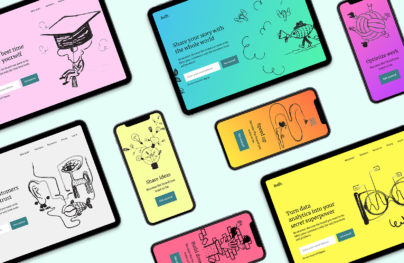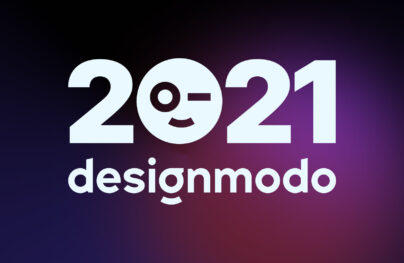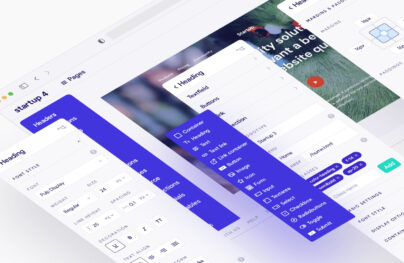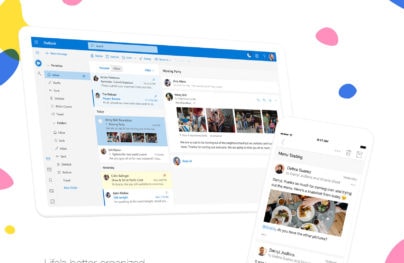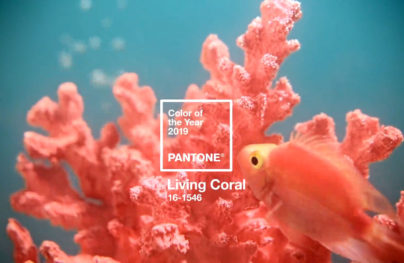10 Years of Designmodo: Highs, Lows, Lessons and Inspiration
Designmodo turns 10 years old in August 2020! 🥳 All this time, I’ve never shared what happens behind the scenes here. It’s been an amazing journey – so I’ve decided to share how the company came to be what it is today.
This is a story about turning tough times into valuable lessons. About creating success in what seems like an impossible situation.
Hopefully, you can learn from our failures, and also take some inspiration from how we picked ourselves up when we got knocked down. Repeatedly!
There’s one thing I want to mention at the outset: we’re an indie company that exists because of the support from our incredible community of creative clients. We never sought investments or business mentors, and we’ve worked entirely remotely since the beginning.
So, here goes…
Chapter 1 – Freedom
In August 2010, I decided to start a blog about web design and development. It was at the height of the blogging/vlogging boom! In the first 6 months, I published three articles per day (it was a crazy time!) and built an extensive library of website content in a short period of time. I was doing it all in my free time from my full-time job, in the evenings and on weekends.
Revenue from AdSense and BuySellAds was growing fast. So, in January 2011, I decided to leave my job. I dedicated all my time to my project, and my own freedom. I began to invest around 80% of revenue in new authors to write better articles – there’s always someone better than you. I was aware that the blog needed to grow further, and I started to invest more in authors than in my daily needs. I don’t spend to excess. I only buy enough in my daily life for my basic needs. This is notion is known as minimalism, and I continue to live in this style.
Chapter 2 – The Best Idea

In 2011, I pushed hard on publishing new articles, tutorials, and freebies. User numbers were headed towards the sky. In the autumn of that year, I noticed a new trend in web design: UI Kits. The big idea was a hit! 💡
I had seen a few designers beginning to post some shots with ready-made UI elements on Dribbble. At that moment, I decided to look for a partner, a good designer who was interested in creating some free UI Kits for Designmodo’s audience – which was the best idea ever! Yes, I have some design and coding background, but to make something really cool, I needed a professional partner.
“There is always someone better than you.”
I sent ±150 emails to different designers from Dribbble and Envato. I received a few responses; one was positive. Together we started work on the first UI Kit with plans to share it for free.
In early 2012, we released the first UI Kit, and it was a success! We received so many mentions, and website traffic grew far more than we had expected. Server down, server up… appreciations, new contacts, new offers… People were asking for more elements. We answered the call with a paid version.
We launched our first premium UI Kit, priced at $19. 💰 Soon came the sale! But then… the first refund. ‘What?’ ‘Why?!’
The refund was, it turned out, because the client couldn’t open the PSD file on his old machine. So, we thought, will EVERY sale be refunded!? 😲 Happily, that wasn’t the case. In the next few days, the sales kept coming in, refunds didn’t, and we were motivated to create new UI Kits for web and iOS.
Chapter 3 – Downfall
In April 2012, Google released a new algorithm, and Designmodo’s traffic fell from 135,000 to 25,000. That made a big impact on our sales, and worse, motivation and enthusiasm. I remember how hundreds of websites shut down or were abandoned after this update.

I couldn’t believe it had happened. I’ve since learned more about how the new algorithm works, but of all I’ve read, very little applies to our website. My conclusion is that we accumulated too many low-quality backlinks due to our popular freebies. The next few months were a constant fight with algorithm updates, and we recovered 50% of our traffic. We never renounced the project and we started work on a new UI Kit.
Chapter 4 – Inspiration: Get Ahead of Trends
The new UI kit was entirely different. It was the first pre-coded Bootstrap HTML Kit, and the main innovation was to make it in the Flat design style (the biggest design trend of the next few years). That trend has been reflected in the Apple products later in that same year.
In May 2013, we released the Flat UI with flat colors and flat icons, six months before Apple released its OS based on flat design principles. In the same year, we released the Startup Framework, based on Flat UI. It was one of the first online page generators with pre-made blocks of designs and with ready-made code.
Flat UI and Startup Framework were the shining stars that pushed us forward. Both products were a huge success, and more people learned about us. There were millions of downloads of the free version. Major publications mentioned our products in their news and articles. We got 15,000 stars on Github. And all this just in a few months!
The period from 2014 to 2015 was fantastic. The only unhappy memory of the time, not related to sales or products, was a legal problem with using “Startup,” the name of our framework. But we won and continued to use the name. Then we received a DMCA request to Flat UI, for the colors we used in this UI Kit. A company (which no longer exists) asserted that we used their colors to create our UI Kit. This gave us enormous support; thousands of designers and developers turned out on different communities like Reddit and Y Combinator. We won again and continued using the colors, and still more designers and developers started using Flat UI.
We released the Slides Framework in 2015. This app was what kept us going and growing sales. We presented a new way to build static websites, with a new builder experience and visually appealing templates. The community’s feedback was positive and with continued support from the Slides customers.
Chapter 5 – FAIL!@
As I mentioned earlier, from the start of the project we’ve continuously reinvested the money we earned. So, we tried developing a new product, this time for WordPress. It was a bad decision and a valuable learning lesson.
After the Startup Framework release, people had asked for a WordPress theme based on that. Sounds like a good idea, right? We gave it some thought. “Let’s do this!” we said.
We hired a few WordPress developers and started to work on the Startup WordPress theme. The first release of the theme failed, but we still had revenue from previous products, so we decided to continue working on the theme and make it better.
We covered all our spending with our sales for a few months, but then sales began to fall. 🤯
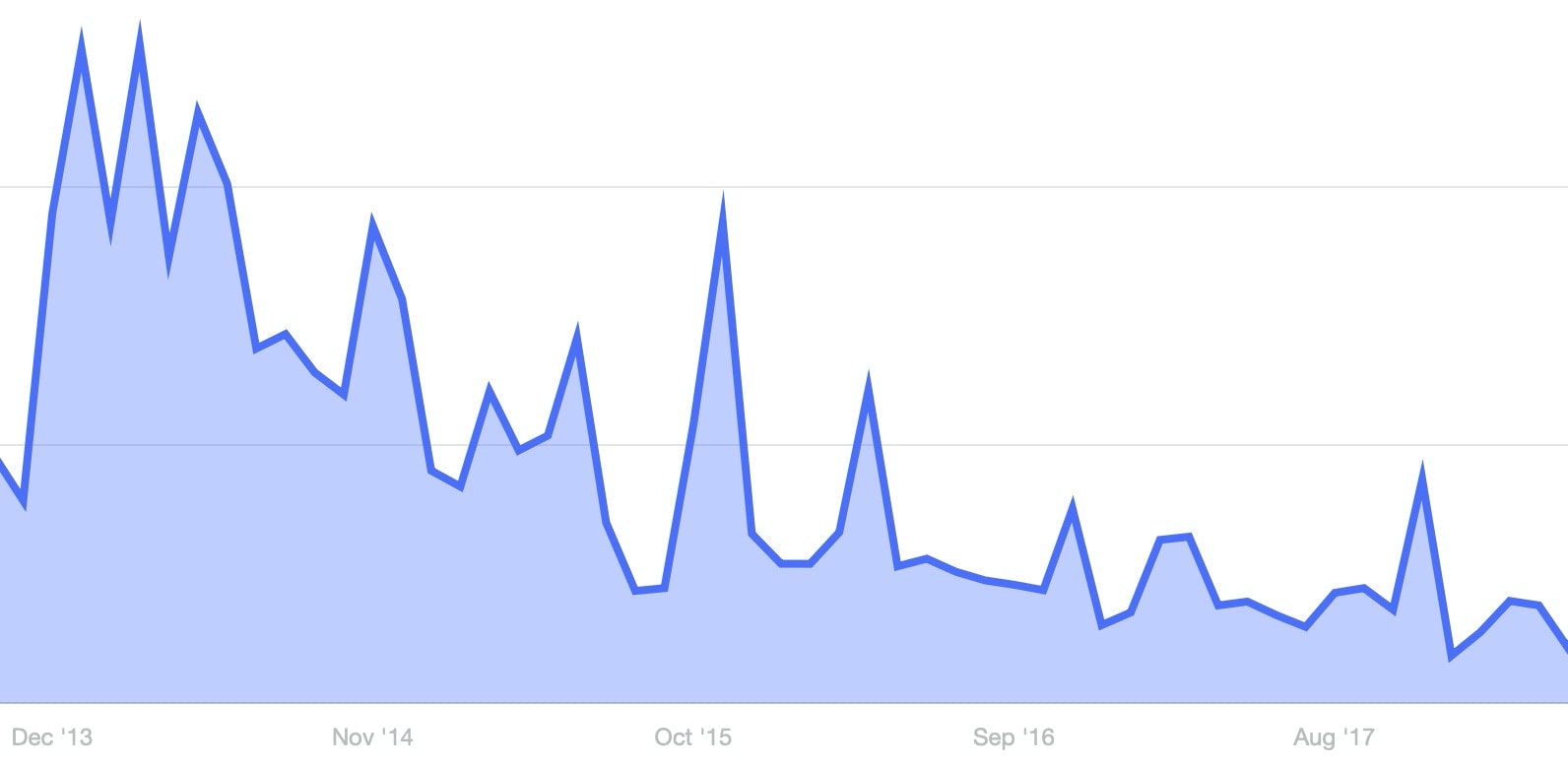
Our solution to save the project? “Let’s FAIL AGAIN!” 🥳
We started work on a WordPress (again!) plugin called Qards. No luck with this plugin as well.
In 2016-2017, we stopped developing WordPress products and started to pay off the debts we’d built up with previous developers. We continued to fix bugs on previous products and offer support for clients. We were paying everything we needed each month, over the space of a year.
We continued publishing articles and tutorials, offering support, and fixing bugs. We had to cut a large part of the project budget, but we continued to post new content.
We lived from our savings. We lost a part of the team. Only three of us remained: Sergey, Edvard, and me.
So, what did we do wrong?
- We hired too big a team to get the work done quickly.
- We targeted an industry (WordPress) that wasn’t familiar with and that we didn’t understand.
- We started a WordPress project without any WordPress expertise in the core team.
- We managed our money poorly, without analysis of past and expected sales.
- We developed every product/feature users suggested, without considering the business case for doing so.
- We only thought about acquiring new users, not retaining them over the long term.
Chapter 6 – What Next? Uncertainty
We found ourselves with a huge community; almost a quarter of a million Twitter followers, 150,000 email subscribers, and 100,000 Facebook fans! But we had nothing to offer them. No inspiration, no motivation. “Where’s the freedom we set out to find?” we thought.
Poor sales continued in 2017. We had no engine to drive forward new products!
We’re down… ☠️
What next? Look for investors? Sell the project?
After team discussions and months of uncertainty, we came up with a new plan.
We didn’t have enough money to invest in developing new products. But what if we could find a team happy to work on it initially without pay, but then take a share of all the profits? Would anyone want to do that? Yes, it turned out; there are people who want to create a startup from zero.
We started to build a new team with new people, with whom we could work well and create something cool for our audience. In a few months, we found and organized the team and started to work on Postcards, Startup, and Slides.
We relaunched in February 2018. 🚀
Chapter 7 – New Start, Forget the Past
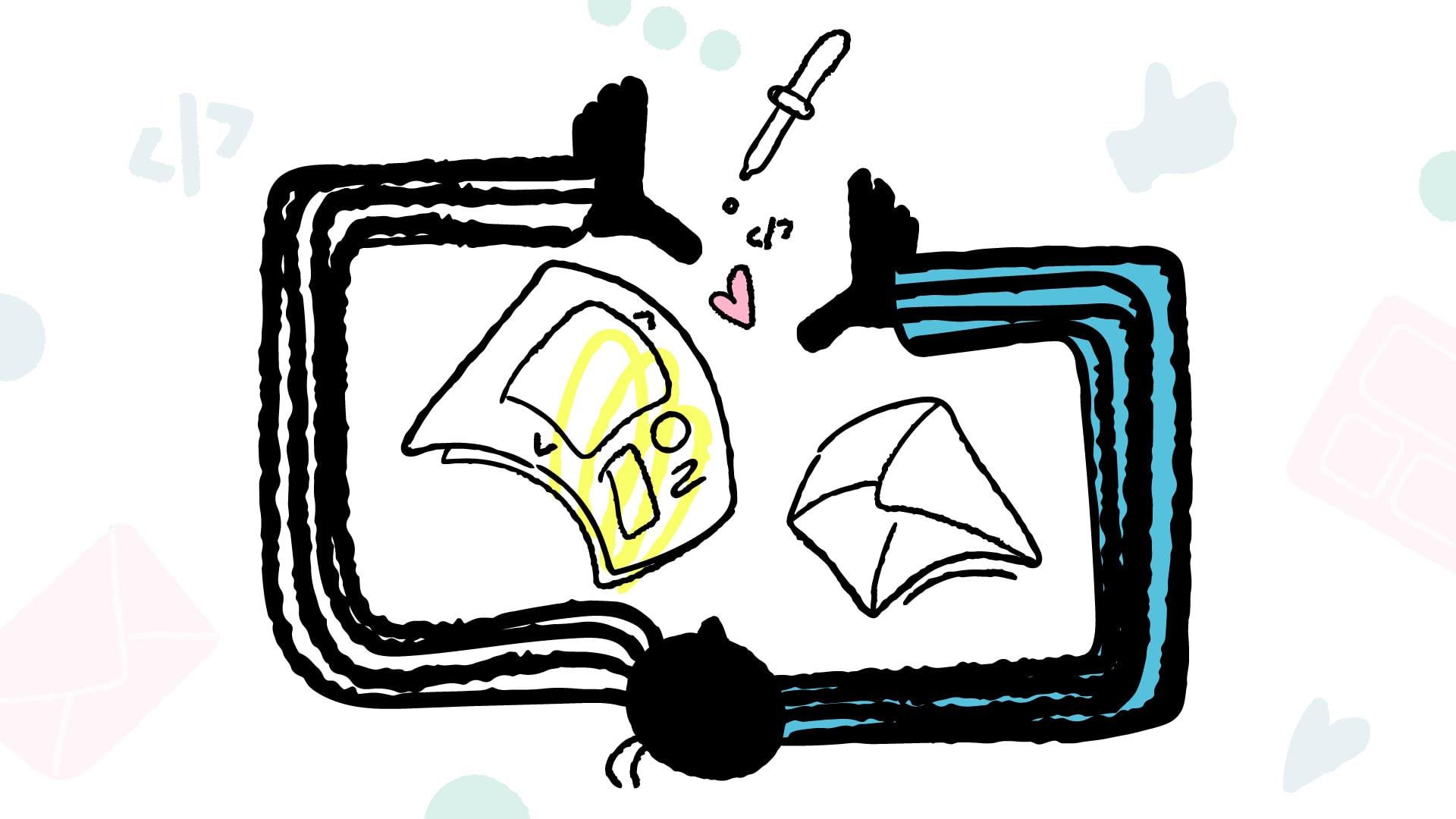
After a massive redesign and new logo release, we put all our efforts into the new products. This time, we decided to offer subscription-only access to our apps. Previous products remained online, and clients could access them; but for new products, clients had to keep a subscription active to access app functionality.
We redesigned and recoded Slides and Startup, and released the first new product: Postcards. Those apps are now the core of the Designmodo business; we frequently update them with new functionality. Thanks to the dedication of our team and the profitability of the apps, we worked in a stable, slow-grow mode.
What do you think we did with the money we started earning? We continued to invest, putting 70% of the money back into the business.
Chapter 8 – What We’ve Learned
The past 10 years have been an incredible journey.
Here’s what they taught me:
- If you’ve really got faith in your business, put your profits into it as well as your heart.
- No matter how challenging a situation may seem, there’s always a solution if you think creatively and have the ability to learn from failures. Maybe that means developing a new idea or abandoning an old one. Maybe it means collaborating with people in new ways. Just don’t let it get you down.
- Building a supportive community can pay higher dividends than you could ever imagine.
- Focus on what you know. Innovate, sure, but don’t try to crack a new market if you don’t know what you’re doing.
- Don’t rush to turn each and every suggestion into reality; take time to work out which ones are worth pursuing and which aren’t.
Chapter 9 – Present and Future
Now, we’re working on Slides, Startup, and Postcards updates. We’ll release a big update for Postcards later this year, and we’ll release some new functionality and facelifts for Slides and Startup. With our small team, we want to make all our apps no-code ready.
A month ago, we redesigned the Designmodo’s first page and released it on ProductHunt.
Something more? Yes! 🤫
We’re working on three new side-projects related to:
- No-code website builder for designers
- Email marketing
- Hosting
All three projects are expected to be released this autumn. They’re different than what’s on the market right now; I really hope you will like them. The future’s looking bright.
Chapter 10 – Team

Building a solid team is one of the most important elements of product development. You can start solo, but if you want to grow, if you want your idea to become a reality quickly, you need a good team with ambition and dedication. The team should be professionals with good organization and the right skills. Every team member should help power the engine driving the project forward, without needing to be pushed by others.
“During Designmodo’s existence, I have seen how a team might be broken up in the most extreme situation, but I have also seen how a team can be strong and rise again.”
We have excellent professionals behind Designmodo. A few of them prefer to stay out of the public, so we won’t mention names! We come from far and wide, working from Moldova, Spain, United States, Romania, Ukraine, Russia, Uzbekistan, and Armenia among other countries.
You can be a good professional, but if you can’t work as part of a team, you can’t achieve the desired purpose. Remember: You should grow with your team. Don’t get left behind.
Footnote
I want to thank our entire community for being such a special part of this journey from a small blog to a SaaS business. These years were full of hope, mistakes, learned lessons, and happy moments for our team, and we’re really grateful for all the support and trust you offered us during all this time. And maybe it sounds trivial, but without you, our supportive community, the development of Designmodo as you know it today, wouldn’t have been possible. We appreciate this more than you’ll ever know.
I’d love to know what you think of our journey, or if you have any comments on Designmodo generally. Please leave a message!
See you online! 🙌
Andrian
Follow us on Medium, Twitter, Facebook, YouTube, and Dribbble.

